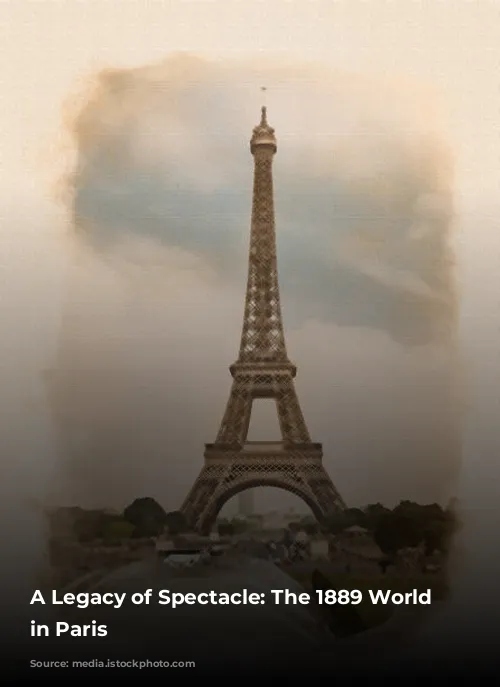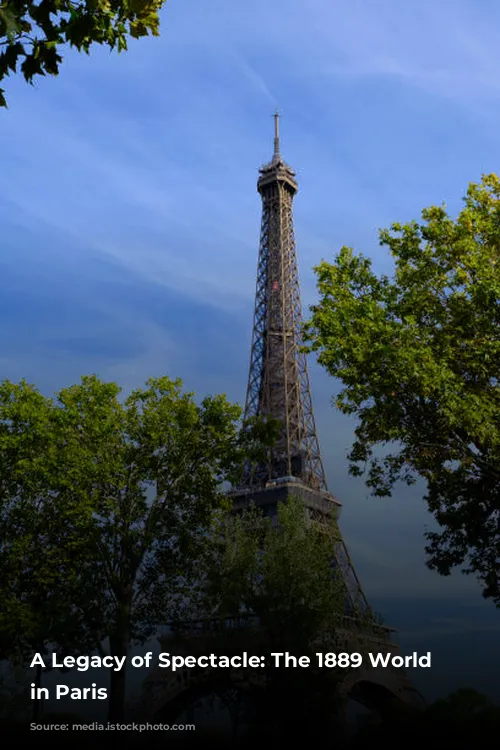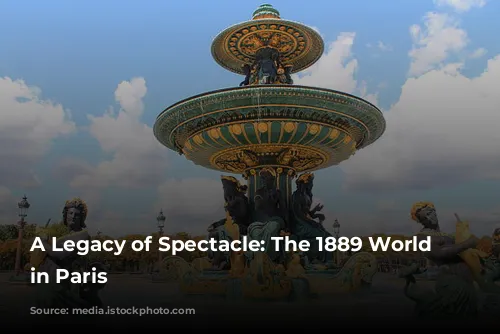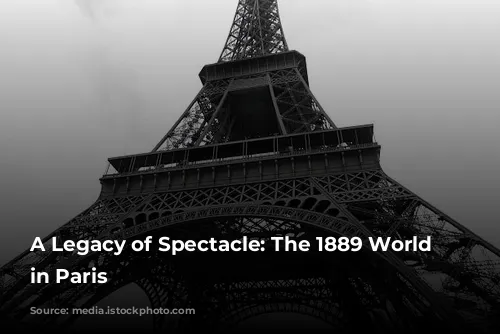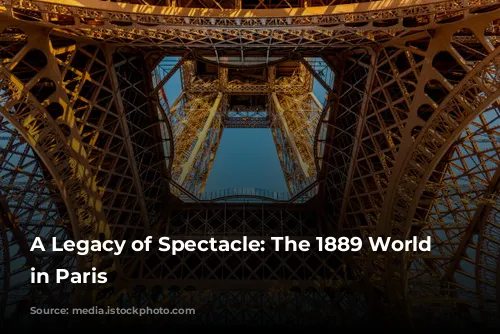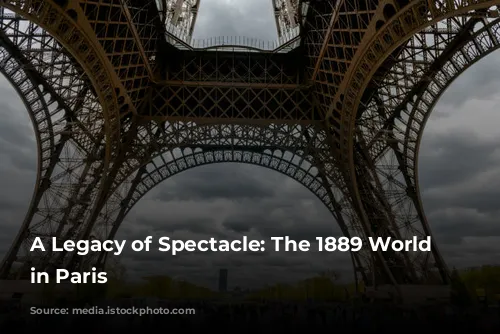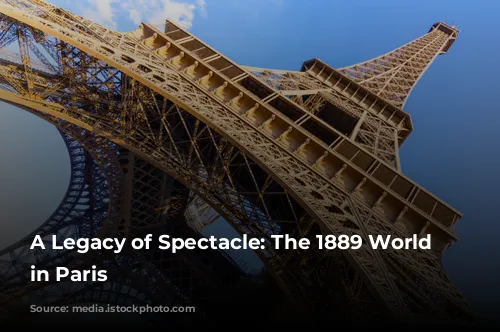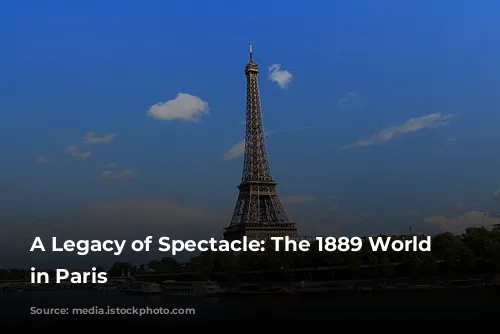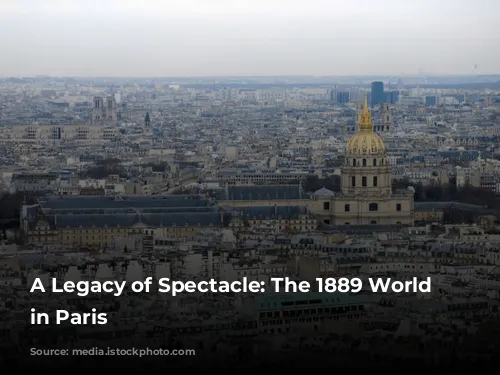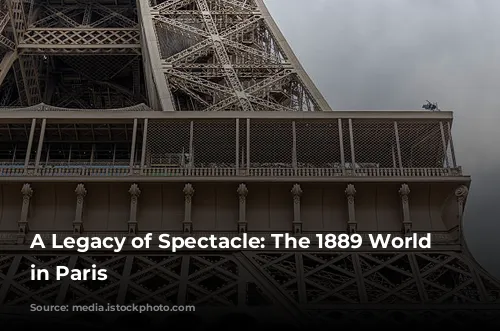The 1889 World Fair in Paris, while overshadowed by the enduring Eiffel Tower, was more than just a fleeting spectacle. It marked a turning point in the way these major events were envisioned and executed. Let’s delve into the fascinating history of this grand exhibition, exploring its impact on the world stage and its legacy as a pivotal moment in the history of international expositions.
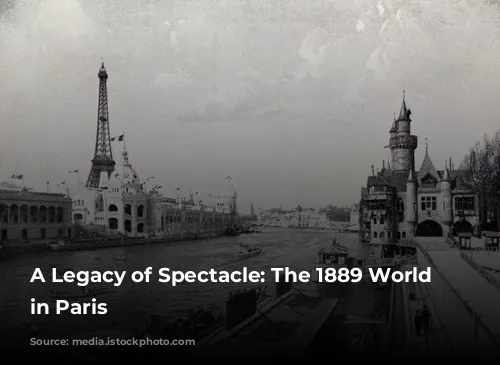
A Legacy of Grandiose Buildings
The 1889 World Fair wasn’t the first of its kind. London had sparked the trend with its 1851 exhibition, showcasing an awe-inspiring prefabricated structure. Paris quickly followed suit, a testament to the fierce national pride associated with these events. Each exhibition aimed to outshine the last, culminating in the grand 1889 spectacle.
The 1855 Paris exposition showcased a remarkable palace with a stone façade and impressive iron and glass vaults. Fast forward to 1867, and the grand Champ de Mars played host to a massive oval structure, complemented by charming pavilions nestled in the surrounding gardens.
The 1878 exhibition saw the construction of the Trocadero Palace, boasting two impressive wings encircling a concert hall that could accommodate over 4,000 spectators. The Champ de Mars, meanwhile, was adorned with beautifully crafted glass galleries, their architectural elegance showcasing the intricate designs of the time.
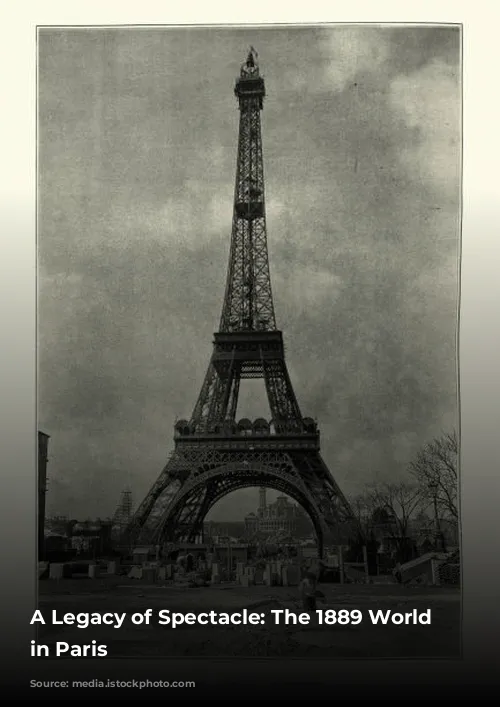
A Monument to Innovation and National Pride
The 1889 World Fair was a celebration of innovation and national pride. It celebrated the 100th anniversary of the French Revolution and showcased the strength of French industry, underlining the nation’s rise as a global power, rivaling its British counterpart.
The exhibition spanned over 125 acres, showcasing the latest technological marvels. The “Galerie des Machines,” a colossal structure spanning over 420 by 110 meters without internal supports, stood as a symbol of architectural ingenuity, while the Eiffel Tower, soaring above the city, cemented the event’s legacy.
It was a testament to the French Republic’s ambition and a grand stage for its colonial empire to showcase its influence. Despite a boycott from European monarchies, the exhibition attracted a significant American presence, further highlighting its global appeal.
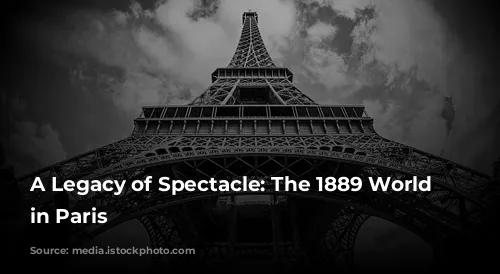
A Tapestry of Inventions and Artistic Displays
The World Fair was a vibrant display of artistic and industrial creations. Over 61,000 exhibitors, more than half of whom were French, presented their innovations and artistic masterpieces.
The exhibition drew over 32 million visitors, a remarkable figure for the time. While a staggering two million visitors ascended the Eiffel Tower, the overall experience was one of discovery and wonder. Visitors could explore new inventions, like electricity and the telephone, transforming the world around them.
The exhibition presented a stunning panorama of architectural styles, blending the boldness of metal frameworks with the refined artistry of ceramics, terracotta, and stained glass. This blend of modern and traditional aesthetics showcased the evolution of design, leaving a lasting impression on the visitors.
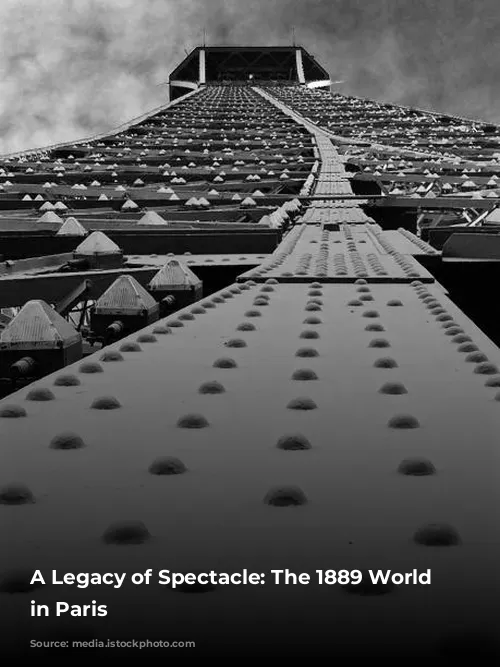
A Lasting Impact on the World
The 1889 World Fair, despite the dismantling of many of its structures, left a lasting legacy. It served as a catalyst for future expositions, shaping the way these events are conceived and executed, and setting the stage for even grander displays of innovation and global collaboration.
While the exhibition itself may have faded from memory, its impact on the world remains. It served as a platform for the exchange of ideas, a celebration of human ingenuity, and a testament to the transformative power of global events. The echoes of this grand spectacle continue to resonate in the modern world, reminding us of the power of human ambition and the boundless potential of innovation.
